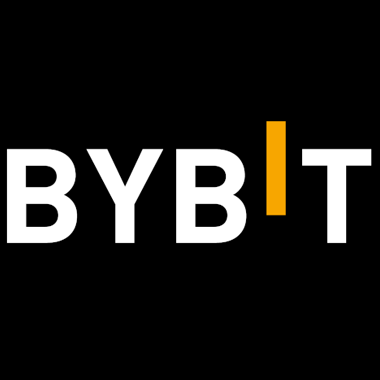Snowflake Cloud Data Breach Impacts Over 160 Enterprises Worldwide
Published on: 08 Jul 2025

In mid-2024, global cloud data warehousing giant Snowflake became the center of a high-profile cybersecurity incident that affected more than 160 enterprise customers across industries like telecom, finance, and retail. The breach, reportedly orchestrated by a cybercriminal group known as UNC5537 (linked to the infamous Scattered Spider), exposed massive volumes of sensitive data from companies that relied on Snowflake's infrastructure for storage, analytics, and AI workloads.
This breach highlights the rising danger of third-party cloud dependencies, particularly when enterprise clients fail to enforce basic security controls like multi-factor authentication (MFA) and identity lifecycle management.
🛠️ How the Breach Happened
Unlike traditional breaches that exploit zero-day vulnerabilities, this attack leveraged unprotected customer environments within the Snowflake platform. Specifically, attackers targeted Snowflake customer accounts that lacked MFA and used stolen credentials purchased from infostealer marketplaces.
Once inside, the attackers:
Accessed massive datasets stored in customer data warehouses
Exfiltrated sensitive records including personally identifiable information (PII), transaction logs, and customer behavior analytics
Pivoted across cloud environments using lateral movement techniques
Snowflake clarified that its core infrastructure was not breached. Instead, the breach stemmed from misconfigured client environments, where individual Snowflake instances were accessed using valid (but poorly protected) credentials.
🧾 Victim Profile
Victims of the breach included large enterprises such as:
AT&T: call detail records leaked
Ticketmaster: customer order and event history compromised
Santander Bank: partial customer data accessed
Lending firms and fintech startups relying on Snowflake for data analytics
Reports indicate that some data was later found for sale on dark web forums, creating concerns about identity theft, fraud, and reputational damage.
❌ What Went Wrong
The breach wasn't caused by a technical flaw in Snowflake’s product. Instead, the incident exposed a dangerous over-reliance on default settings and weak customer configurations:
Lack of Mandatory MFA
Many customers had not enforced MFA, leaving accounts vulnerable to simple credential theft.
Shared Credentials Across Services
Reuse of usernames and passwords across different platforms made them susceptible to infostealer malware.
Insufficient Monitoring & Alerting
Many affected organizations didn’t have alert systems for abnormal access patterns, especially in large cloud environments.
Assumption of Platform Security
Companies mistakenly assumed Snowflake’s security covered their own access control responsibilities.
📉 Business & Industry Impact
The breach had a ripple effect across the global cloud ecosystem:
Multiple clients faced regulatory scrutiny over data handling practices
Share prices of affected companies dropped as investor confidence waned
Trust in cloud platforms was temporarily shaken, especially for industries handling financial or health data
Snowflake faced public backlash despite not being directly compromised, prompting it to introduce stricter default MFA settings and new client onboarding policies
🔐 Key Cybersecurity Takeaways
This incident underscores the shared responsibility model in cloud computing. Even if a cloud provider is secure, customers must actively secure their environments.
Recommendations include:
Enforce MFA across all cloud user accounts
Audit third-party data access and privileges regularly
Monitor for abnormal API or user activity using behavioral analytics
Educate teams about credential hygiene and infostealer malware risks
Set clear cloud governance policies around data handling and access
🧠 Conclusion
The Snowflake breach is a textbook example of how sophisticated attackers now exploit the weakest link—human error and misconfiguration, not technical flaws. As organizations migrate more data to the cloud, they must prioritize identity management, monitoring, and access control to avoid becoming easy targets in a digitally connected world.
This breach highlights the rising danger of third-party cloud dependencies, particularly when enterprise clients fail to enforce basic security controls like multi-factor authentication (MFA) and identity lifecycle management.
🛠️ How the Breach Happened
Unlike traditional breaches that exploit zero-day vulnerabilities, this attack leveraged unprotected customer environments within the Snowflake platform. Specifically, attackers targeted Snowflake customer accounts that lacked MFA and used stolen credentials purchased from infostealer marketplaces.
Once inside, the attackers:
Accessed massive datasets stored in customer data warehouses
Exfiltrated sensitive records including personally identifiable information (PII), transaction logs, and customer behavior analytics
Pivoted across cloud environments using lateral movement techniques
Snowflake clarified that its core infrastructure was not breached. Instead, the breach stemmed from misconfigured client environments, where individual Snowflake instances were accessed using valid (but poorly protected) credentials.
🧾 Victim Profile
Victims of the breach included large enterprises such as:
AT&T: call detail records leaked
Ticketmaster: customer order and event history compromised
Santander Bank: partial customer data accessed
Lending firms and fintech startups relying on Snowflake for data analytics
Reports indicate that some data was later found for sale on dark web forums, creating concerns about identity theft, fraud, and reputational damage.
❌ What Went Wrong
The breach wasn't caused by a technical flaw in Snowflake’s product. Instead, the incident exposed a dangerous over-reliance on default settings and weak customer configurations:
Lack of Mandatory MFA
Many customers had not enforced MFA, leaving accounts vulnerable to simple credential theft.
Shared Credentials Across Services
Reuse of usernames and passwords across different platforms made them susceptible to infostealer malware.
Insufficient Monitoring & Alerting
Many affected organizations didn’t have alert systems for abnormal access patterns, especially in large cloud environments.
Assumption of Platform Security
Companies mistakenly assumed Snowflake’s security covered their own access control responsibilities.
📉 Business & Industry Impact
The breach had a ripple effect across the global cloud ecosystem:
Multiple clients faced regulatory scrutiny over data handling practices
Share prices of affected companies dropped as investor confidence waned
Trust in cloud platforms was temporarily shaken, especially for industries handling financial or health data
Snowflake faced public backlash despite not being directly compromised, prompting it to introduce stricter default MFA settings and new client onboarding policies
🔐 Key Cybersecurity Takeaways
This incident underscores the shared responsibility model in cloud computing. Even if a cloud provider is secure, customers must actively secure their environments.
Recommendations include:
Enforce MFA across all cloud user accounts
Audit third-party data access and privileges regularly
Monitor for abnormal API or user activity using behavioral analytics
Educate teams about credential hygiene and infostealer malware risks
Set clear cloud governance policies around data handling and access
🧠 Conclusion
The Snowflake breach is a textbook example of how sophisticated attackers now exploit the weakest link—human error and misconfiguration, not technical flaws. As organizations migrate more data to the cloud, they must prioritize identity management, monitoring, and access control to avoid becoming easy targets in a digitally connected world.



